As the name of the post suggests, I thought I would compile a list of all the aircraft currently in use with the Royal Air Force. While I won’t necessarily go into detail on each aircraft’s technical specifications (because to do so for the 31 different examples would take an inordinate amount of time and information, bloating this post to far bigger than it should be), I intend to state things like where (or if) the aircraft is deployed (in terms of air bases in the UK or overseas) and any noteworthy operations it has been involved with.
I have organised the aircraft by its purpose – feel free to use ctrl + F to navigate to an area of your choosing:
Training
Combat
Transport
ISTAR
Helicopters
Heritage
Finally, my sources for this information will primarily be the RAF website, but I will probably also consult other places as well. I’ll link them at the end of the post.
Let’s get into it.

Training
I suppose it is kind of obvious that, in order to have personnel capable of operating the equipment (involving some of the most advanced technologies available), you need them trained. As such, there is a suite of training vehicles designed for such a purpose. Training pilots in the RAF involves a progression – from a basic glider all the way up to turboprops and fast-jets.
Viking T1
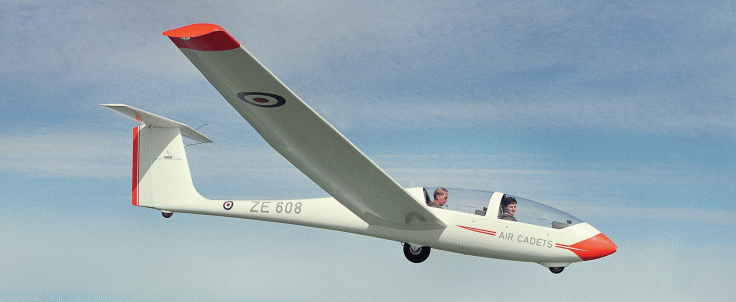
This glider serves as the starter point for all cadet pilots in training. Cost-effective, and a great starter point for trainee pilots. It is capable of “high performance flying and aerobatics”.
Nine separate voltuneer squadrons operate this aircraft, and it can also be found at RAF Syerston, where it is used for VGS instructor training.
On a sidenote, all the images of the aircraft I acquire are sourced from the RAF website (unless stated otherwise).
Tutor T1

Once trainee pilots have completed their run in the glider, it is time to move on to more a advanced field of study. The Tucano T1 serves as the cadet’s initial experience in a single-seater aircraft.
You can find these planes stationed at RAF Wittering, used by 115 Squadron, 16 Squadron, and the Grob Tutor Display Team.
120TP Prefect
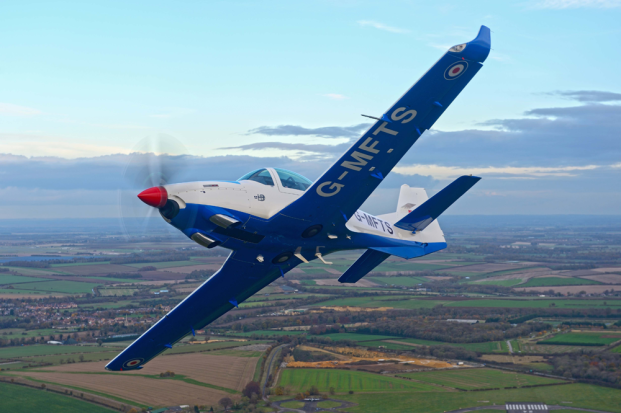
Due to replace the Tutor T1 on a more widespread basis, the 120TP Prefect operates in a similar capacity to it. It’s a single-seat trainer designed to teach the cadet how to fly. Officially, the aircraft is based at RAF Cranwell with XVII Squadron. It also is known to operate out of the nearby Syerston as well.
The Prefect brings “turboprop power, digital avionics and retractable undercarriage to elementary flying training”.
Tucano T1
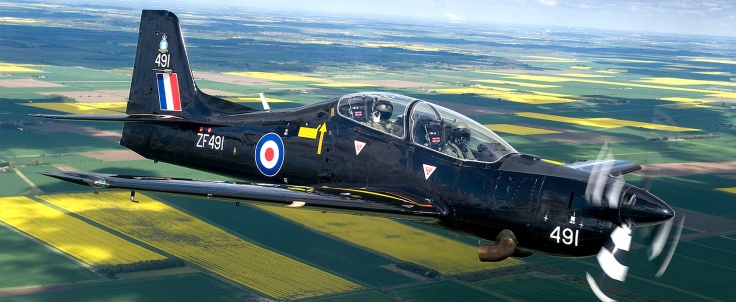
Once cadets have mastered flying, it will be time to move onto military flying. That is, flying in a military context. For this, The Tucano T1 is the RAF’s trainer of choice.The Tucano is due to be replaced soon, however, by the Texan.
The Tucano T1 is based at RAF Linton-On-Ouse with 72 Squadron.
“Today, students come to the Tucano from the Tutor and progress onto the Hawk T2, but from 2019 the Tucano will be replaced and the fast jet training progression will be Prefect, Texan II, Hawk T2.”
Texan T MK1

The Texan will replace the Tucano’s analog cockpit with a digital glass cockpit featuring “modern avionics”. In addition, the inbuilt “mission system is capable of generating simulated air-to-air targets and scoring against the release of simulated air-to-ground ordnance.”
So the digitisation will allow for more scenarios to be acted out in training with the more…advanced anti-aircraft measures that are in existence today.
Hawk T2/T1

Cadets will move from the Tucano (or Texan) to the Hawk T2, for more fast-jet training. The Hawk has two variants – T1 and T2. The main difference is that the Hawk T1 is used by the the Red Arrows, while the Hawk T2 is used as a trainer aircraft.
The T2 is based at RAF Valley, with IV Squadron and XXV (F) Squadron. In addition to the Red Arrows, the Hawk T1 is used by 100 Squadron and is based at RAF Leeming.
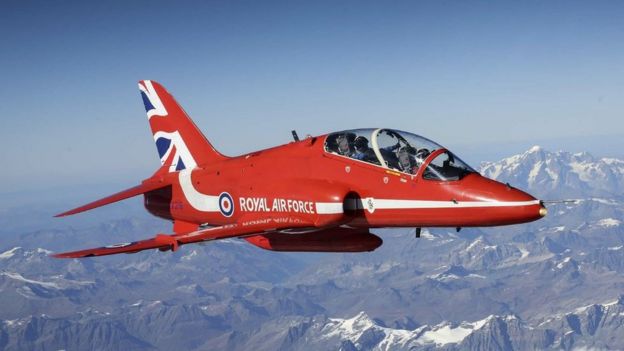
The main differences are in avionics. The training version has the systems in place such as “a data link that gives the pilot synthetic radar for intercept training”.
Embraer Phenom 100

This dual-engined business jet is designed to train cadets in multi-engine flying. Again, as is the logic with other trainers, first cadets learn how to fly. Then they learn how to fly in a military context. After they are finished with the Phenom, they move onto the Atlas.
The Phenom replaced the B200GT, which operated out of RAF Cranwell – so one can reasonably expect the Phenoms to be based there as well.
H135 Juno/H145 Jupiter
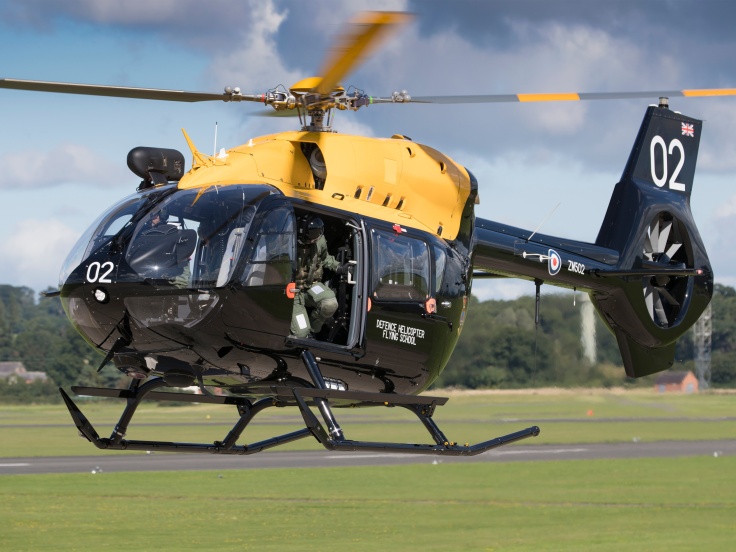
Both H135 and H145 are the RAF’s training helicopter of choice, providing the “basic rotary wing training role with the Defence Helicopter Flying School at RAF Shawbury”. As such, you can find these helicopters at RAF Shawbury. Both H135 and H145 are equipped with glass digital cockpits, allowing more modern training in line with modern avionics systems.
Combat
Eurofighter Typhoon FGR4
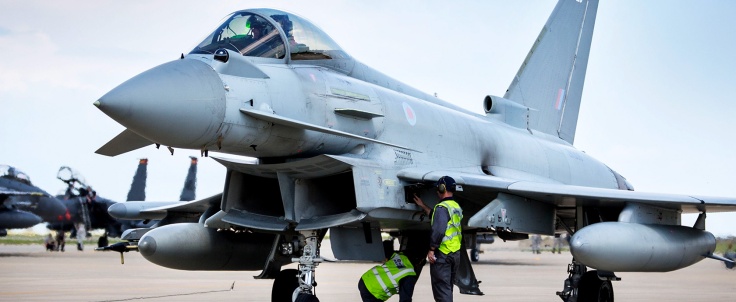
As one of the most advanced fourth generation fast jets around, the Typhoon is the UK’s premier interceptor aircraft. At the time of this post, the Typhoon serves as the primary force in Britain’s QRA for both the UK and Falkland islands, and indeed Estonia as part of NATO’s Batlic Air Policing Mission. Since its inception, Typhoon has gained the capability as a multi-role aircraft – not just limited to interception and air-to-air combat, but able to carry out CAS and surveillance missions as well.
With its distinctive deltawing design (meaning its wings are flat at the trailing edge forming a sort of triangle shape when viewed from above), the Typhoon was a joint project between NATO European partners Britain, Germany, Spain and Italy. Since its inception in the mid/late 90s, the Typhoon has remained one of the top fourth gen jets around.
As I mentioned, QRA is probably the main role of the Typhoon these days. The jets operate on a permanent basis out of RAF Coningsby and Lossiemouth and are the ones that are going to intercept you, should you try and infringe anywhere near our airspace. Just recently there were a few instances of Russian planes over the North Sea that, while they did not reach UK airspace, were safely diverted away from where they did not quite belong. More recently, in mid-may, Typhoon jets were scrambled twice in a single day (May 14th, 2019) over the Baltic Sea as part of Operation Azotize.
The squadrons which fly the Typhoon are as follows: 1 (F) Squadron, 29 Squadron, 3 (F) Squadron, 41 Squadron, 6 Squadron, II (AC) Squadron, XI (F) Squadron, IX (B) Squadron and the Typhoon Display team.
As part of Operation Shader, RAF Typhoons are also temporarily based in Akrotiri, Cyprus. This is due to the ongoing effort against ISIL (or Daesh).
Lockheed F-35B Lightning
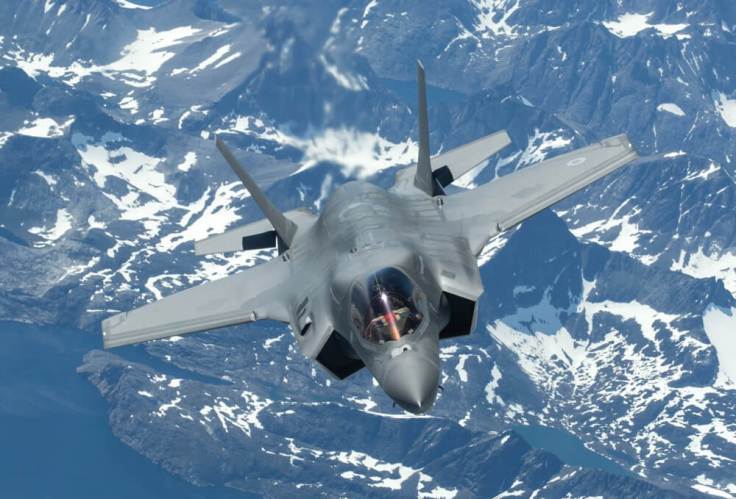
The latest weapon in NATO’s arsenal, the F-35B Lightning is among the most advanced weapons on the planet. Designed primarily as a multi-role fast-jet, it is built around low-observable technology (AKA stealth) in order to make it a precise, invisible force to be reckoned with.
“If you can’t see it, you can’t kill it” – Lockheed Website.
In addition, the F-35 is packed with advanced sensors and intelligence gathering tech. Its “integrated sensors, sensor fusion and data linking provide the pilot with unprecedented situational awareness”. The pilot is also able to share information gathered easily, or even act on it itself. One such example is the use of infra-red cameras to provide the pilot a 360 degree view unobstructed around the aircraft. AESA radar is another example.
The F-35 comes in three variants. The version acquired by the RAF is the B variant, which is equipped with VTOL capability. This means it can hover, along with taking off vertically (like a Harrier jump jet). This allows the F-35 to be used on carriers or short runways, promoting more joint-service usage of the jet in that regard.
Recently the F-35 saw its first combat in Iraq with the US Air Force. It conducted an air strike on April 30th 2019 as part of Operation: Inherent Resolve (Which is basically the American version of Operation: Shader).
F-35 jets operate out of RAF Marham, flying with 17 and 617 Squadron.
Transport
Mobility is another key facet of air power, and none do air mobility better than the RAF’s selection of transport aircraft. Whether its moving large vehicles, supplies or soldiers, or smaller lots of cargo, the RAF’s fleet is up to the job.
Atlas A400M
The A400M is one of the UK’s big transport planes. While the C-130 holds the spot as the premier of large transport aircraft in the RAF, the A400M is similar, but different. Indeed, the C-17, the C-130 and the A400 are all very similar, which begs the question of why the RAF has all three in service.
Well, the A400M is a slightly more modern take on the C-130 – it’s slightly smaller but as a result its faster, lighter, and has more range. The choice in which aircraft to use comes down to what the mission is, and what kind of cargo needs transportation.
The operational debut of the A400M came with Operation Ruman (the response to people affected by Hurricane Irma). It operates on a permanent basis from RAF Brize Norton, flying with 206 Squadron, LXX Squadron, and XXIV Squadron.
Hercules C-130J

The C-130 has become a staple of modern military transport aircraft, with a spat of appearances in Hollywood blockbusters and AAA video games (especially in its AC-130 configuration). The RAF’s usage of the C-130 in its various forms has been widespread for quite literally decades. The first variant, the C Mk.1 flew in 1966 and entered service in 1967 – and even though the A-400 is earmarked to eventually replace it, it will take time for this to happen. The MoD has stated that the Hercules will probably be retired around 2030.
The Hercules has served the RAF incredibly well over the years. During the Falklands War (Operation Corporate), Hercules aircraft were the ones ferrying supplies and equipment to the military forces there. It was even given an in-flight refuelling capability, designated as C. Mk 1P. Today, as part of Operation Shader, Hercules aircraft operate out of RAF Akrotiri in the ongoing fight against Daesh. Unfortunately, there has been reports of a loss of a C-130 (after a bad landing, the aircraft was written off). This, I believe, was the first loss of an RAF aircraft in Operation Shader (I’ve linked the full article at the end of the post).
On a permanent basis, the Hercules operates out of RAF Brize Norton with 206 Squadron, 47 Squadron, the Falcons, and XXIV Squadron.
C-17 Globemaster III
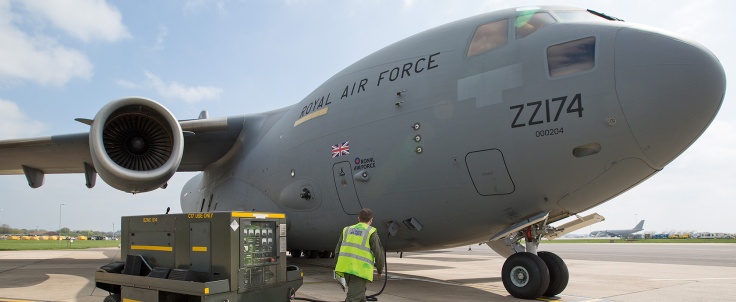
If the the Hercules and A400M are the mid-sized transport planes, then the C-17 is the big one. This “heavy-lift strategic transport aircraft” is used by the RAF in humanitarian and military applications, and has been for almost two decades.
The thing that separates the C-17 from the other cargo planes is size. The C-17 is much, much bigger. This allows it to carry far more, to the exent that it can carry tanks and other armoured vehicles.
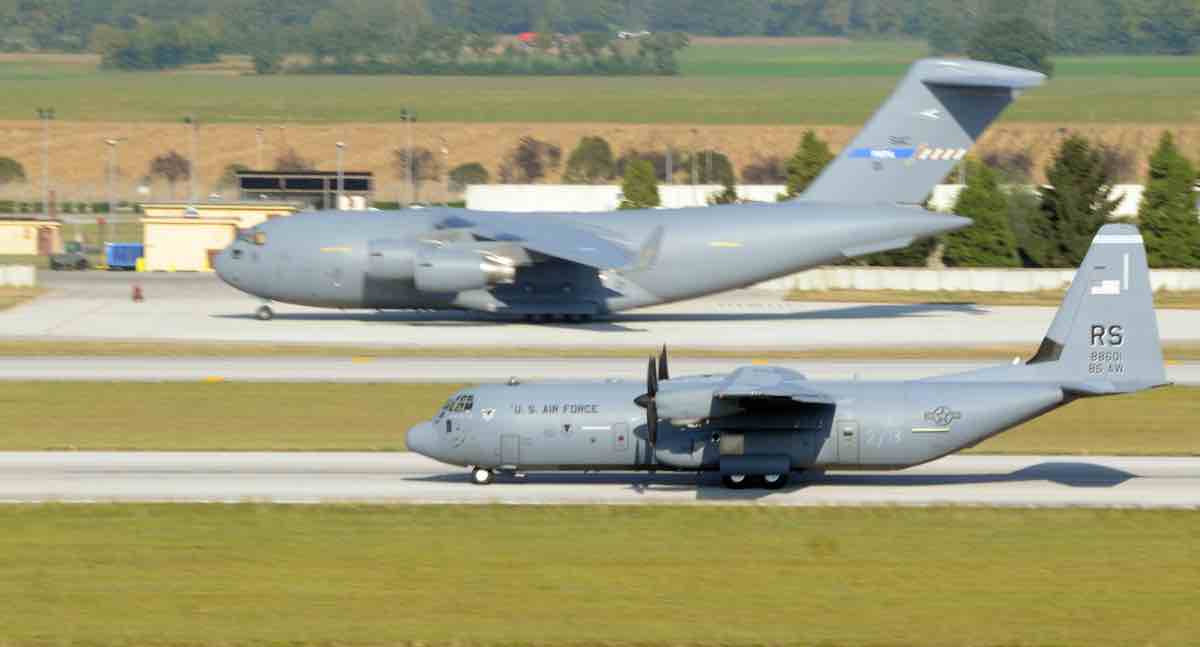
Obviously, the C-17 is the more heavy duty transport plane the RAF has

In terms of its operational use, the RAF website sums it up nicely:
“Number 99 Squadron reformed at RAF Brize Norton to operate the aircraft, which rapidly became a stalwart and key enabler of the airbridge operation that sustained UK operations in Afghanistan.”
Among its humanitarian deployments, the C-17 is also currently temporarily stationed in Akrotiri as part of Operation Shader. On a more permanent basis, however, you can find C-17s at RAF Brize Norton (much like the other big cargo planes), with 99 Squadron and XXIV Squadron.
BAe 146
The BAe146’s resemblance to a passenger liner is no coincidence – the aircraft’s primary function is the transportation of passengers (mainly government ministers or members of the royal family). It can also be rapidly switched to a freight version for the moving of cargo.
You can find this aircraft at RAF Northolt with 32 Squadron.
Leonardo Grandnew

The Grandnew’s purpose is similar to that of the BAe146 – the transportation of important individuals – whether it be commanders or ministers. Being a helicopter, it has a lot more flexibility than other means of transport, as it can land in far more places.
Just like the BAe146, you can find the Grandnew at RAF Northolt under use with 32 Squadron.
Voyager

The importance of Voyager (and air-toair refuelling in general) cannot be overstated. By extending the time an aircraft stays in the air, the ability to perform is extended. The Voyager’s purpose is twofold. Air-to-air refuelling, and of course transport in general. As you can see in the image above, the Voyager has two pods for fast-jet refuelling, with a third for larger aircraft along the centerline. It can carry 111,000kg of fuel reserves for other aircraft to tap into.
Voyagers are a relatively new addition to the RAF arsenal – entering service in 2012. Their use has become widespread, from Operations Azotize (the Baltic airspace policing mission), Kipion, Toral and Shader in current times, to important operations since 2012 like Ruman and Herrick (in the latter stages). Air-to-air refuelling enhances the flexibility of air power massively, by reducing limitations on the reach of aircraft. As such, it has become a staple of most modern air forces worldwide.
The Voyager is permanently based at RAF Brize Norton, flying with 10 Squadron and 101 Squadron.
ISTAR
Standing for “Intelligence, Surveillance, Target Acquisiton and Reconnaissance”, ISTAR is another massively important facet of air power – for gathering information, especially in today’s age, can make all the difference on a modern batltefield.
E-3D Sentry

This airborne early-warning (AEW) and C&C aircraft is the RAF’s premier in that specific area of the ISTAR category. The E-3D flies around, monitoring the airspace for hostile elements. It also has the capacity to detect ships with its array of sensors and radars to detect heat, radar signatures and other giveaways of unidentified craft in its vicinity.
The E-3D is currently being deployed as part of Operation Shader, they were also deployed during the 2011 military intervention in Libya. The E-3D is stationed permanently at RAF Waddington, with 54 Squadron, 56 Squadron, and 8 Squadron.
Sentinel R1

The Sentinel is “the most advanced long-range, airborne-surveillance system of its kind in the world”, utilising its powerful multi-mode radar to pass intelligence in “near real-time” to friendly forces nearby.
In Wing Commander C R Mellville’s paper on air power, he discusses the use of the Sentinel R1 during Operation Ellamy. During which, the Sentinel was employed to watch vehicle movements along the Libyan coast – a distance of 548 nm. The Sentinel covered this distance twice in a single sortie. To put it in perspective, covering the same linear distance with visual surveillance from the land would require “105 static observation posts.” Not to mention that these 105 obseration posts would manned, supplied, and protected. Even if a two-man team were deployed to each station, it would result in the necessity of over 200 personnel, Melville surmises. All of this is negaed by a single Sentinel, with its five-person aircrew.
In addition to Ellamy, the Sentinel has been deployed in support of British efforts in Afghanistan and Mali, along with the current Operation Shader. One can find Sentinels permanently based at RAF Waddington, flying with 54 Squadron, 56 Squadron and V (AC) Squadron.
With the UK recently confirming a purchase of a handful of E-7 Wedgetail AEW aircraft, it is possible that they will soon replace the Sentinel fleet.
MQ-9 Reaper
With drone technology becoming more prevalent in modern warfare, drones such as the MQ-9 Reaper have found increasing usage in modern air forces and militaries. The reaper drone is able to conduct ISTAR and attack missions without any risk to personnel, because the vehicle is remotely operated from afar. You can rebuild a drone – you cannot rebuild a person.
RAF Reapers have been around since the mid-2000s. They were used in Afghanistan as part of Operation Herrick, and following that they were added to the RAF’s core fleet. Currently, the drones are part of the RAF forces in Iraq, fighting ISIL. They are temporarily basde at Akrotiri for that purpose, however you can find them on a permanent basis at RAF Waddington with 39 Squadron and 13 Squadron.
Shadow R1
While similar to the Sentinel, the Shadow offers ISTAR capabilities that complement it. As it says on the RAF website:
“The Shadow’s electro-optical and electronic capabilities complement those of the Sentinel R.Mk 1, its data combining with that gathered by Sentinel and other platforms to help analysts prepare comprehensive intelligence product. Satellite communications links enable information download during a mission and the aircraft is also fitted with a comprehensive defensive aids suite.”
The Shadow (and indeed other ISTAR aircraft) is an effective force multiplier – because knowing where the enemy is, how they are going to act, or what equipment they have at their disposal can enable friendly forces to act with far greater effectiveness.
The Shadow currently finds itself in the use of 14 Squadron and 54 Squadron, based at RAF Waddington.
It is also among the ISTAR aircraft currently being used in Operation Shader. Previously, the Shadow also found itself deployed on Operation Herrick as well.
RC-135W Rivet Joint

Sometimes going by the name “Airseeker”, the Rivet Joint aircraft is primarily used to detect radars and other electronic emissions by “soaking up” the signals they produce. This is what is known as signals intelligence.
In a different way, the plane surveys “elements of the electromagnetic spectrum in order to derive intelligence for commanders.” The aircraft is based at Waddington (like many of the other ISTAR machines), with 54 Squaron and 56 Squadron. The aircraft is also currently deployed on Operation Shader in Iraq, which it has been used by the RAF extensively.
P-8 Poseidon
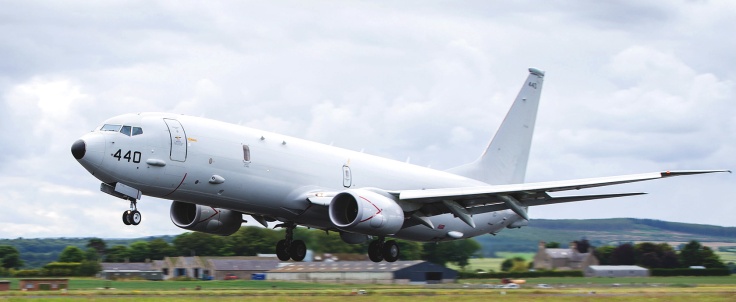
Although not technically yet in RAF service, the RAF has confirmed that the Poseidon will begin its operational life in 2020, based at Lossiemouth with 120 Squadron.
The Poseidon is a sea-patrol aircraft, with sensors and weapons systems for anti-submarine warfare, as well as surveillance and search and rescue missions.
It’s basically a plane designed to patrol coastlines and water-ways.
E-7 Wedgetail
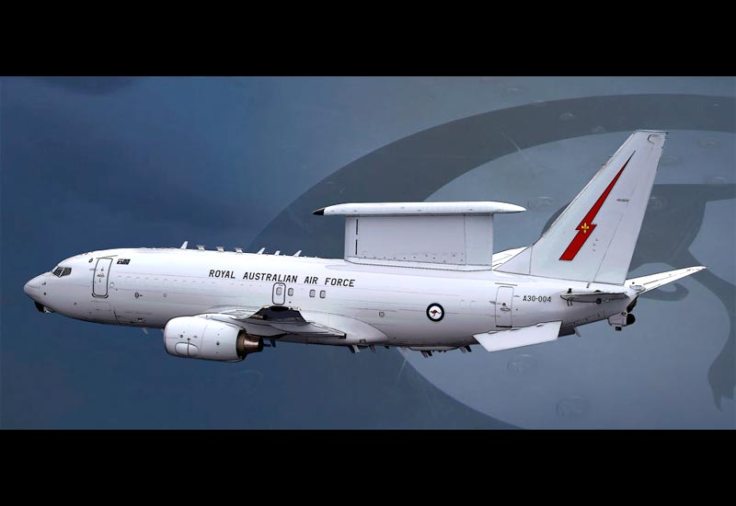
The RAF recently announced a purchase of a handful of Wedgetail aircraft to replace the Sentinel R1. The Wedgetail is currently in service with the RAAF, so it is likely to go under a different name in RAF usage.
Helicopters
Support and multi-role.
Bell Griffin HAR2

A very much modernised version of the iconic UH-1 Huey, the Bell Griffin HAR (Mks 1 and 2 in RAF Service) operate in a variety of roles beyond just support. They can transport goods and troops, be fitted with underslung Bambi Buckets for firefighting and, perhaps its most common role in the RAF, act as a Search and Rescue helicopter. The Griffin helicopters are also utilised in the Defense Helicopter Flying school.
You can find the Griffin HAR2 at RAF Valley and RAF Akrotiri, flying with 202 and 84 Squadron.
CH-47 Chinook

With its excellent versatality and immense lifting capability, the Chinook is one of the most iconic aircraft in the RAF’s arsenal. Whether it is shifting cargo, lifting vehicles or transporting/evacuating troops, the Chinook is a mainstay of the RAF’s transport helicopter fleets.
They are permanently based at RAF Odiham and RAF Benson, flying with 18 Squadron, 27 Squadron, 28 Squadron, 7 Squadron, the Chinook Display Team, and the Falcons. Chinooks have also been involved in jus tabout every major operation since the Falklands war – from Northern Ireland, to Iraq, Sierra Leone, Lebanon, Afghanistan and Northern Mali. Currently, Chinooks are out in the field in Iraq, part of Operation Shader.
Puma HC2

If the Chinook is the RAF’s heavy duty helicopter, then the Puma fills the role as a medium support helicopter. This means that the role of the Puma overlaps more with the Griffin, as well as the Chinook.
The Puma has been in RAF use since 1971. Historically based at RAF Odiham, the Puma now resides at RAF Benson flying with 230 Squadron, 28 Squadron and 33 Squadron.
The helicopter is, among the rest of the RAF’s vehicles, deployed in Iraq as part of Shader. The Puma has also been used in an array of humanitarian efforts, as well as Operation Kipion, the RAf’s presence in the Persian Gulf (an operation of increased importance, given the recent tensions with Iran).
Heritage
Chipmunk

While not as widely seen as the other Heritage aircraft, the Chipmunk is retained by the Battle of Britain Memorial Flight (BBMF) in part for its utility – either transporting pilots or other necessities, scouting venue locations or even just training new pilots, the Chipmunk is the lesser-known, yet extremely important cog of the Memorial flight’s capability.
The home station of the BBMF is RAF Coningsby.
Dakota

This transport plane is probably the most iconic when it comes to the Allied forces of the Second World War. The plane was also used widely by civillian operators and other air forces around the world. One will note the markings of the Dakota (the sole aircraft of its type in the BBMF) – the stripes were used in the Normandy Landings of June 1944 in order to distinguish friendly aircraft, while American Dakotas famously dropped the airborne troops behind the beaches to secure bridges and other important objectives just prior to the landings.
The Dakota pictured above (the one in BBMF service) is actually referred to as ZA947 (likely its number printed on the rear of the fuselage, near the RAF roundel). According to the RAF:
“ZA947 is now painted to represent Dakota FZ692 of No 233 Squadron, around the D-Day period in 1944. This aircraft, which was named ‘Kwicherbichen’ by her crews, was involved in Para-dropping operations on the eve of D-Day and subsequently in re-supply and casualty evacuation missions into and out of forward airfields in the combat areas.”
Hurricane IIC

The BBMF possesses two of the 12 remaining functioning Hurricanes worldwide. IICs were produced later in the war – distinguished from earlier models by things such as a different propeller and (perhaps most importantly) four 20mm Hispano cannons, two per wing. The Spitfire gets a lot of credit for the victory in the Battle of Britain, but it was the Hawker Hurricane that was the real backbone of the RAF during that battle, acting as a bomber interceptor while the Spitfire duked it out with the Germans’ ME109s.
Spitfire

It goes without saying that the BBMF would have access to the Spitfire – six in total, varying from the early Ia (used in the Battle of Britain) to the later Mark XII (you can tell from the straightened wingtips and Hispano cannons). The Spitfire is a famous aircraft, ubiquitous with the RAF’s achievements during the Second World War on the fighter front.
Lancaster

If the Spitfire represents everything about the RAF’s achievements on the fighter front, then the Lancaster represents everything about our bombers. With events like the Dambusters of 617 Squadron, the feats of this aircraft have passed into legend.
The reason that these aircraft (beyond just the Lancaster, but the whole of the BBMF’s aircraft) have such importance culturally is that for many years of the Second World War, the only real way to fight Germany was in the air (and of course the sea). Systemic bombing campaigns against the Third Reich were debated in regards to their effectiveness – but one cannot forget their effects in terms of morale.
So that’s it – every single aircraft in RAF service, regardless of the capacity. Hopefully I have not forgotten any, or left any out. Hope you enjoyed the post – as promised, a few links I found useful I will place below.
LCR
https://www.raf.mod.uk/news/articles/wedgetail-to-be-rafs-new-early-warning-radar-aircraft/
http://www.eliteukforces.info/uk-military-news/2018-07-02-c-130-lost.php
https://ukdefencejournal.org.uk/news/air/
Remote warfare increasingly strategy of choice for non-state actors



.jpg)
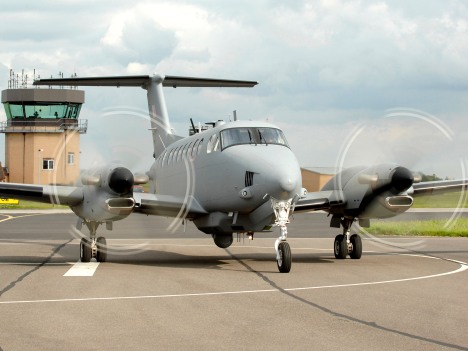
Leave a comment